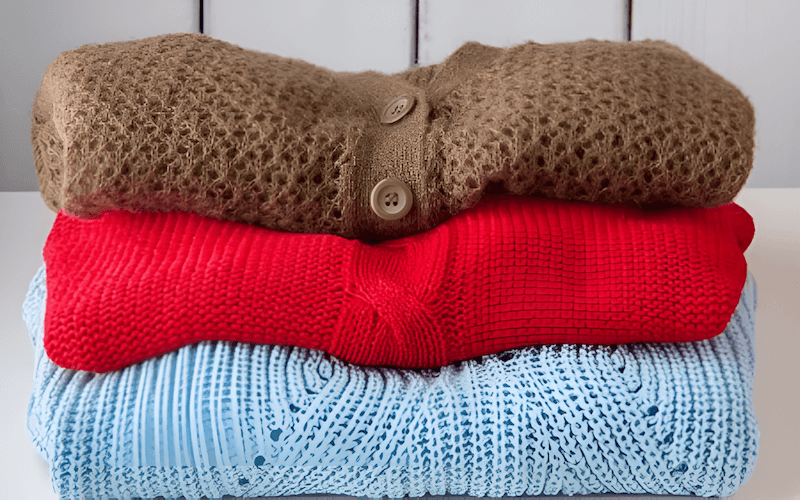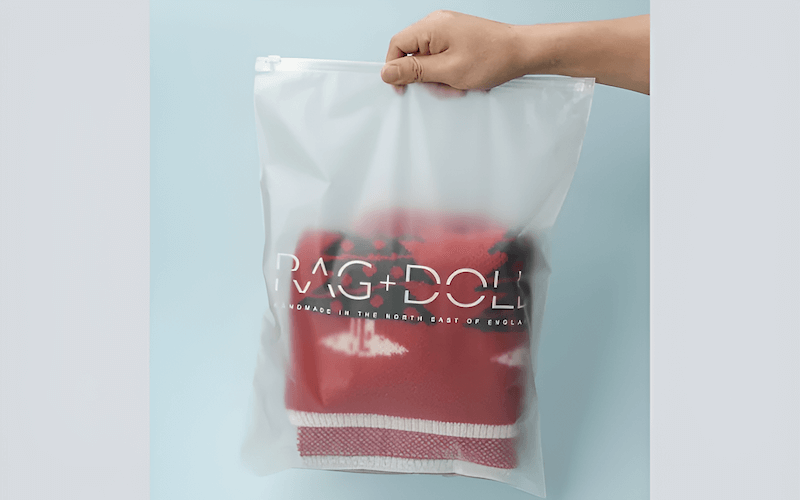Sweater Storage: Zipper Bags for Ultimate Care
Properly storing sweaters is essential to keeping them in great condition for years to come. This article delivers valuable information for clothing retailers looking to expand their knowledge of protecting their products. We’ll go over how using zipper bags (sealed plastic bags used for storage) for sweater storage offers significant advantages, boosting protection, organization, and space-saving capabilities. Whether it’s a small boutique or a growing online store, understanding these storage methods will improve inventory management and help retain the perfect quality of the products for customers.
1. Why Use Zipper Bags for Sweater Storage?
Storing sweaters requires more than just folding them and placing them in a drawer. Many factors can affect the quality of the fabric over time. This is where zipper bags become a great solution for businesses.
1.1 Protection from Pests
Moths and other insects are a nightmare for clothing retailers. These tiny creatures can cause significant damage to sweater fibers, leaving behind holes and ruining the product. Zipper bags create a physical barrier, effectively preventing pests from reaching the sweaters.
Unlike simply placing sweaters on a shelf or in a drawer, sealed bags ensure comprehensive protection, eliminating the need for potentially harmful chemicals like mothballs. A small investment in protecting clothes from these pests is well worth considering.
1.2 Protection from Dust and Dirt
Even in a seemingly clean environment, dust and dirt particles are constantly circulating. Over time, these particles can settle on sweaters, dulling their colors and potentially causing fiber degradation. Zipper bags act as a shield, keeping sweaters pristine and clean. This is especially important for businesses that need to store inventory for extended periods.
1.3 Protection from Moisture
Moisture is another major enemy of clothing, particularly sweaters. High humidity or accidental spills can lead to mildew and mold growth, resulting in unpleasant odors and irreversible damage. Airtight zipper bags provide excellent protection against moisture, keeping sweaters dry and fresh. For added protection, especially in humid climates, consider adding silica gel packets (small packets containing a desiccant that absorbs moisture) inside the bags.

1.4 Space-Saving Benefits
Space is often a premium in retail settings, whether it’s a physical store or a warehouse. Compared to bulky boxes or hanging storage, zipper bags offer a remarkable space-saving advantage. Sweaters can be neatly folded and compressed within the bags, maximizing storage capacity.
1.5 Organization and Visibility
Clear zipper bags provide excellent visibility, allowing for quick and easy identification of specific sweaters without the need to open each bag. This is a huge time-saver when managing inventory. Labeling the bags further enhances organization, making it simple to locate specific styles, sizes, or colors.
2. Choosing the Right Zipper Bags for Your Sweaters
Selecting the appropriate zipper bags is crucial for maximizing their effectiveness. Several factors should be considered to ensure optimal sweater protection and storage.
2.1 Material
The material of the zipper bag plays a significant role in its durability and protective qualities. Common options include:
- PE (Polyethylene): PE is a common, affordable plastic option. PE bags are generally durable and offer good protection against dust and moisture.
- PVC (Polyvinyl Chloride): While durable, PVC may contain chemicals that can potentially damage delicate fabrics over time. It is not recommended for very long-term clothing storage.
- PEVA (Polyethylene Vinyl Acetate): A chlorine-free alternative to PVC, often considered more environmentally friendly. PEVA offers similar protection to PVC.
- Fabric Bags (with Zipper Closure): Some fabric bags are designed with zipper closures, offering breathability while still providing some protection. These are a better choice when air circulation is needed.

2.2 Size
Choosing the right bag size is essential. A bag that’s too small will compress the sweater excessively, potentially leading to wrinkles and misshaping. A bag that’s too large will waste space and may not provide adequate protection.
Consider the size and bulkiness of the sweaters. Lightweight sweaters may require smaller bags, while thicker, bulkier sweaters will need larger ones. Measuring sweaters before purchasing bags is a helpful practice.
2.3 Closure Type
The zipper closure is the primary mechanism for sealing the bag and preventing the entry of pests, dust, and moisture.
- Standard Zipper: A basic zipper closure is sufficient for many storage needs.
- Zip-top: Provides a more secure and airtight seal compared to a standard zipper.
- Double Zipper: Offers an extra layer of protection, creating an even tighter seal. This is the best choice if you want the highest level of security.
2.4 Other Features
Beyond the basics, some zipper bags offer additional features that can enhance their functionality:
- Airtight Seals: Crucial for long-term storage and protection against moisture and pests.
- Reusable: Many bags are designed for multiple uses, making them a cost-effective and environmentally conscious choice.
- Disposable: Single-use bags may be suitable for certain situations, such as shipping or short-term storage.
- Handles: Convenient for carrying and transporting bags, especially when dealing with multiple sweaters.
- Gusseted Bottoms: Allow the bag to expand, providing more space for bulky items.
- UV Protection: Some bags offer protection against ultraviolet (UV) rays, which can fade colors over time. This is especially important if storing sweaters near a window.
3. How to Store Sweaters in Zipper Bags: A Step-by-Step Guide
Properly preparing and storing sweaters in zipper bags is key to maximizing their longevity and maintaining their quality. Follow these steps for optimal results:
3.1 Step 1: Prepare Your Sweaters
Before storing, ensure all sweaters are clean and completely dry. Washing or dry cleaning removes any dirt, oils, or residues that could attract pests or damage the fibers during storage. Never store damp sweaters, as this can lead to mildew and mold growth.

3.2 Step 2: Choose the Right Size Bag
Select a zipper bag that’s appropriately sized for the sweater. Avoid overstuffing bags, as this can compress the fibers and lead to wrinkles. A little extra space within the bag allows for better air circulation, even within an airtight bag.
3.3 Step 3: Place Sweaters in Bags
Fold sweaters neatly to minimize wrinkles and maximize space efficiency. Various folding techniques can be used, depending on the sweater type and personal preference. For added protection, especially against moths, consider placing moth repellents (such as cedar blocks or lavender sachets) inside the bags. Silica gel packets can also be added to absorb any residual moisture.

3.4 Step 4: Seal the Bags
Carefully seal the zipper closure, ensuring a tight and complete seal. This is crucial for preventing the entry of air, pests, and moisture. Double-check the seal to ensure there are no gaps.
3.5 Step 5: Store the Bags
Choose a suitable storage location for the sealed bags. Ideal locations are cool, dry, and dark, such as closets, drawers, or under-bed storage containers. Avoid storing sweaters in direct sunlight or areas with extreme temperature fluctuations, as this can damage the fibers and fade colors. Bags can be stacked neatly to maximize space efficiency.
4. Tips for Long-Term Sweater Storage
For businesses that need to store sweaters for extended periods, such as seasonal inventory, implementing these additional tips will ensure optimal preservation:
- Regular Inspection: Periodically check stored sweaters for any signs of pests, moisture, or damage. Early detection allows for prompt intervention and prevents further issues.
- Rotate Sweaters: If storing a large quantity of sweaters, rotate them periodically to ensure even wear and tear on the bags and prevent prolonged compression of the same sweaters.
- Refresh Moth Repellents: Replace or refresh moth repellents (cedar blocks, lavender sachets) every few months to maintain their effectiveness.
- Replenish Silica Gel Packets: If using silica gel packets, replace them periodically, as they can become saturated with moisture over time.
- Maintain a Cool, Dry Environment: Ensure the storage area remains consistently cool and dry. Avoid areas prone to humidity or temperature fluctuations.
5. Related Questions
Here are some frequently asked questions related to storing sweaters in zipper bags:
5.1 Can I use vacuum-sealed bags instead of zipper bags?
Vacuum-sealed bags can be used for sweaters, but with caution. While they offer excellent space-saving benefits, excessive compression can damage delicate fibers or embellishments. Zipper bags, especially those with gusseted bottoms, allow for some air circulation while still providing protection.
5.2 How often should I clean sweaters before long-term storage?
Sweaters should be cleaned immediately before storage, even if they appear clean. This removes any unseen dirt, oils, or residues that could attract pests or cause damage over time.
5.3 What’s the best way to label zipper bags?
Use permanent markers or adhesive labels to clearly identify the contents of each bag. Include information such as sweater type, size, color, or any other relevant details.
Read more:
Using zipper bags for sweater storage offers a multitude of benefits for clothing retailers. From protecting valuable inventory from pests, dust, and moisture to maximizing storage space and improving organization, zipper bags are a practical and cost-effective solution.
By implementing the tips and techniques outlined in this guide, businesses can ensure their sweaters remain in pristine condition, ready to delight customers when needed. Zipper bags should become an important solution in your storage strategies.






















